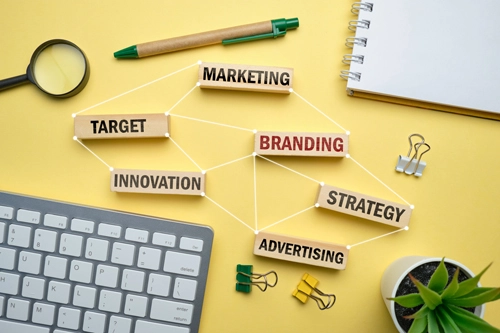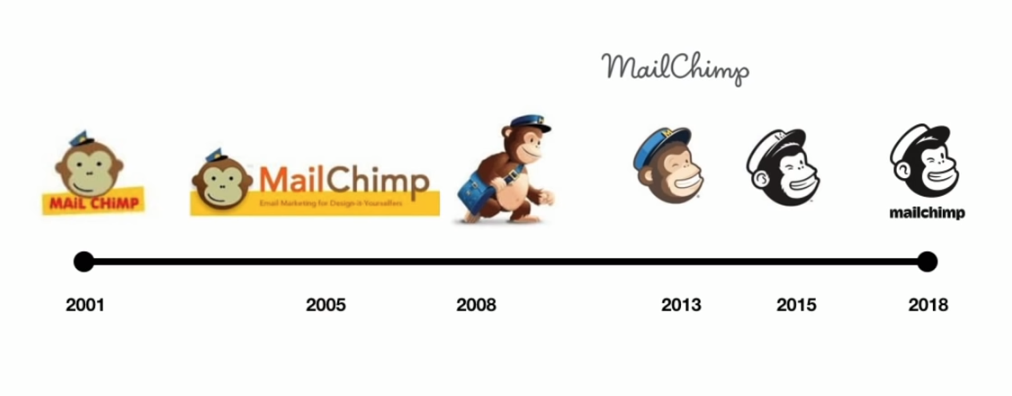The Do’s and Don’ts of Rebranding
At first let us tell you what is rebranding?
Rebranding is a marketing strategy that any organization might need after a curtain time.
Rebranding is not only a new logo or new colors; the rebranding idea is much more than that.
It’s the same brand but with new identity and soul that represents the real characteristics of the company.
When doing rebranding you need to know your position in the market first and whether you need reactive or proactive rebranding strategy
As the proactive rebranding strategy is done after the company realizes it has the opportunity to grow, compete, gain more market share and gain more loyal customers, so it’s kind of an optional strategy done by the company to make business growth.
And for the reactive strategy is almost the opposite of the proactive strategy, as it’s done according to certain changes that might happen to the company caused by unexpected triggers such as, company going through change in management or acquisition, fierce competition and keeping the brand reputation good.
The Do’s of rebranding
So, when is the right time to rebrand?
Your internal and external brand identity are not matching anymore
As many companies especially in the beginning or as a startup they design catchy logos without strong marketing strategy, so after a while according to the brand experience the brand becomes different than what it started at the beginning.
And that what leads us to new rebranding strategy that reflects the brand more reality and values.
Your visual brand is outdated
Actually change is not a bad thing always. Change is needed for outdated things always especially when it’s your brand!
An outdated branding and logo are more likely to fail in market that’s why it’s important to keep your brand looks new and up to date.
Your product or service has changed
As a startup your kind of products or services your offers your audience might change over time as well as should your identity keep up with what you offer for your audience
Losing relevance
Sometimes companies can lose relevance to their brand with their audience as the brand identity only fits for a specific target audience but the company also offers more than that but can’t reach all their target audience, at this point the company needs to rebrand to start addressing their segmented audience right and keep up with them.
Your target market is not defined
Some companies and CEOs believe that targeting everyone is the best strategy, which is very wrong thing to do, because you will never please everyone and you will never reach your real audience as well. That’s why if your company is facing the same problem you must know you need rebranding for your company to reach your real target audience which you can actually please and make loyal customers out of them.
The Don’ts of rebranding
Don’t focus your rebranding only on the logo design
A rebranding is not only a logo design it’s much more than that, focusing your rebranding on changing the logo only will not benefit your brand to reach your target audience or reflect your beliefs, values or mission it will only show a new design that is empty of meanings.
Don’t rebrand according to your vision only
Interview your customers first to see their opinions and benefit from them before taking any decision, and also your primary customers are your employees, they are the ones that can determine the values and culture of your company.
You must take all opinions in consideration to reach the maximum level of satisfaction to your customers.
Don’t rebrand only because it’s the new trend
Your brand identity might be doing its job efficiently and it’s reaching the right audience, not only because a lot of companies are rebranding you are supposed to rebrand too!
Don’t rebrand too often
Rebranding often can cause confusion to your customers and by the time they may forget about the originality of your brand, only rebrand when needed.
Don’t hold to the old brand while rebranding
While rebranding don’t try to transit between brands slowly, once the rebranding is done you must announce the new brand and dump down the old one.
You can make confusion to your current customers if you transited slowly.
Rebrand or refresh
Rebranding is the process of entirely changing the identity, soul and feel of the brand to a whole new brand with a new identity that matches your targeted audience, so you can reach them, connect with them more easily with a brand that speaks their tone and image that reflects their needs
And for the refreshing in this point we don’t entirely change the brand identity, we only aim to add something to the brand existing identity to refresh the existing logo and make it matching more to the new trends or generations and keep it up to date but with the same identity and soul
Let’s have some examples of rebranding
1. DUNKIN’
At their beginning they rebranded from 1960 to 1976 to a whole new branding that reflects their values and services.
Another rebranding occurred from 1976 to 2002 with a whole new identity to match the surrounding trends, vibes, target audience and so on,
From 2002 to 2007 Dunkin’ donuts refreshed from the old logo to the new one as represented in the image above.
Dunkin’ donuts refreshed again and changed a bit in their branding and colors from 2007 to 2019.
And finally in 2019 they did a new brand identity even with different name, they changed from Dunkin; donuts to Dunkin’ only as the products they offer to their customers changed so the name Dunkin; Donuts is not serving their brand anymore.
They decided to rebrand to make the name, design and soul of the brand represents their products, values and beliefs.
2. MailChimp
According to Gene Lee, VP of Design at MailChimp
Today, we announced in an email to our customers that Mailchimp has a new look. We’re excited to share these brand updates and why we made them.
What’s changed and what hasn’t
We’ve updated our logo, wordmark, typeface, colors, and imagery like photography and illustrations. We’ve also evolved from “MailChimp” to “Mailchimp” with a lowercase c. Our name began as a playful metaphor: a chimp who delivers your mail. These days we do so much more than that, and our name stands for more than its component parts.
Aside from new colors and illustrations, everything inside our customers’ Mailchimp accounts will be largely the same.

We’ve made a few changes to our website that make it easier to find helpful resources. A couple highlights:
Our support articles (also known as the Knowledge Base) now live under the Resources menu and are labeled Guides and Tutorials. This is where you can get step-by-step help with Mailchimp.
We’ve retired our blog, but you’ll find existing posts and new articles about our company culture and community involvement in the About section of the site. Product announcements, customer stories, and marketing tips are published under Resources.
How we got here
Mailchimp started out as an email marketing company, but we’ve expanded beyond email and become a leading marketing platform for small businesses. Today, we help millions of customers around the world grow their own way.
As our customers’ needs have evolved, our business and products have evolved right along with them. We built our new brand identity and the overall customer experience to scale and change in step.
Since the beginning, design and user experience have been a core part of our business. In fact, our co-founder and CEO Ben frequently reminds us that design was the first discipline he staffed when the company was founded in 2001. It’s part of what has always differentiated us, and it’s in everything we do.
But with so many creative thinkers under one roof, over time we found that parts of our customer experience grew in different directions. We didn't want our brand to feel disjointed, so we created a more unified and recognizable system by weaving the new brand identity throughout all facets of Mailchimp, from our customers’ accounts to our website, and from our marketing to our support channels.
Staying true to ourselves
With this redesign, we set out to retain all the weird, lovable elements that endeared our earliest customers to Mailchimp, while creating space for the brand to grow and connect with even more small businesses. We didn’t want to lose our heritage in the process, so we focused on capturing the essence of what Mailchimp has always been.
We want to show our customers that being yourself is good for business by providing the tools and confidence to take risks, especially as their businesses evolve. We champion authenticity, originality, and expressiveness because it's what helps us—and our customers—stand out. We hope to inspire them to be more bold and creative in their own branding efforts.
Rebranding is not an easy decision to take but at the right time it’s the most important decision for your company is to rebrand